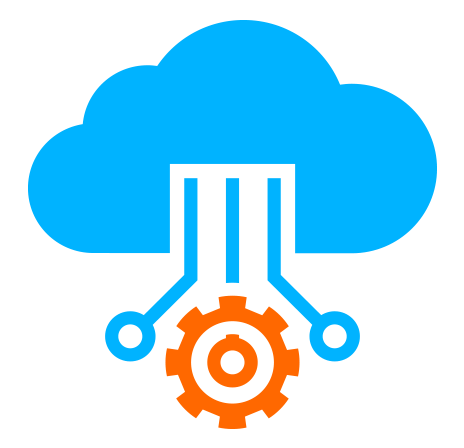 Server
Colocation
Server
Colocation
 CDN
Network
CDN
Network
 Linux Cloud
Hosting
Linux Cloud
Hosting
 VMware Public
Cloud
VMware Public
Cloud
 Multi-Cloud
Hosting
Multi-Cloud
Hosting
 Cloud
Server Hosting
Cloud
Server Hosting
 Kubernetes
Kubernetes
 API Gateway
API Gateway

Artificial Intelligence is no longer just a buzzword—it has become an integral part of modern cloud computing, data processing, and digital business strategies. According to a recent report by Gartner, by 2025, over 75% of enterprises will operationalize AI to streamline workflows and decision-making, making AI-driven solutions indispensable. Among the emerging AI technologies, Retrieval-Augmented Generation (RAG) is transforming the way businesses leverage cloud-hosted servers and intelligent applications.
RAG represents a paradigm shift from traditional AI models. While conventional models rely solely on pre-trained knowledge, RAG AI combines generative AI with real-time information retrieval from external databases or knowledge bases. This combination enables AI systems to produce more accurate, contextually relevant, and actionable responses, opening up new possibilities for industries ranging from customer support to data analysis.
In this blog, we’ll explore how RAG works, its practical applications, benefits, and why cloud infrastructure is critical to harnessing its full potential.
Retrieval-Augmented Generation is a hybrid AI architecture that enhances the capabilities of large language models (LLMs) by integrating retrieval mechanisms.
At its core, RAG consists of three components:
Retriever – This module scans databases, knowledge bases, or cloud-hosted repositories to find the most relevant information.
Generator – Once the data is retrieved, the generative model creates a coherent, human-like response.
Integration Layer – Ensures seamless communication between the retriever and generator, often optimized using cloud servers to handle heavy computational loads efficiently.
The key advantage of RAG over traditional AI models is its ability to reference real-time data, reducing inaccuracies and hallucinations that often occur in standalone generative models. This makes RAG highly valuable for business applications, AI-powered tools, and cloud-based platforms that require reliability and contextually aware outputs.
The functioning of RAG can be understood in a step-by-step workflow:
The process starts when a user submits a query or prompt. For example, “What are the latest trends in cloud hosting for 2025?”
The retriever searches relevant sources stored in cloud servers or external databases. These sources can include structured datasets, company knowledge bases, or online resources. The retrieval ensures the AI has access to up-to-date and domain-specific knowledge.
After retrieving the information, the generator module creates a response that synthesizes the retrieved data into coherent and contextually relevant content. This step is crucial for applications like report generation, content creation, or conversational AI, where accuracy is paramount.
The final output is delivered to the user or application. Advanced RAG systems can also integrate feedback loops to continuously improve responses, using insights from cloud-hosted analytics tools to optimize performance.
RAG has far-reaching applications across multiple domains:
RAG-powered chatbots and virtual assistants can retrieve accurate answers from knowledge bases hosted on cloud servers, providing faster and more reliable support to customers. This reduces resolution time and enhances user satisfaction.
Organizations dealing with large datasets can use RAG to summarize information, extract insights, and facilitate data-driven decision-making. Cloud-hosted servers enable easy scaling for enterprises with vast amounts of information.
RAG can generate contextually rich content for blogs, newsletters, and marketing campaigns by retrieving the latest trends and facts from cloud-hosted repositories, ensuring accuracy and relevance.
RAG can analyze historical purchase data and retrieve product recommendations in real-time. This makes personalized suggestions for users, enhancing conversions and customer engagement.
RAG assists AI researchers in automatically retrieving and analyzing academic papers or technical documents. By leveraging cloud-hosted servers, researchers can handle large-scale datasets efficiently, accelerating innovation.
Since RAG references real-time data, it significantly reduces AI inaccuracies and improves the reliability of outputs.
Deploying RAG on cloud servers ensures scalability, allowing businesses to handle multiple concurrent queries without performance issues. Cloud hosting provides elasticity to accommodate varying workloads efficiently.
RAG systems can access live databases, making them ideal for industries where timely information is critical, such as finance, healthcare, and marketing.
Organizations can train RAG models on specific datasets hosted on cloud platforms, ensuring responses are tailored to their industry or business needs.
Cloud deployment eliminates the need for costly on-premises hardware, offering pay-as-you-go pricing models that optimize operational expenditure while maintaining high performance.
Deploy on Cloud Platforms – Using cloud hosting ensures high availability, fast retrieval speeds, and better resource management.
Curate Knowledge Bases – Feed the system with high-quality, structured data to improve retrieval accuracy.
Continuous Monitoring and Updates – Regularly monitor AI outputs and update retriever databases to maintain relevance.
Integrate Security Protocols – Ensure sensitive data is protected with encryption and cloud security measures.
Performance Optimization – Use analytics from cloud servers to assess and improve AI model efficiency.
The future of RAG is promising, especially as cloud infrastructure evolves and AI models become more sophisticated. Key trends include:
Hybrid AI Systems – Combining RAG with reinforcement learning and other advanced AI techniques for smarter decision-making.
Multimodal Integration – RAG systems capable of handling text, images, and audio, delivering richer outputs.
Enterprise Adoption – Industries like healthcare, legal, and finance will increasingly rely on RAG for accurate, real-time insights.
AI Research Acceleration – RAG will streamline complex research processes, making AI-driven analysis faster and more precise.
By leveraging cloud-hosted servers and modern AI architectures, organizations can deploy RAG efficiently, ensuring high performance while reducing infrastructure overheads.
Retrieval-Augmented Generation is redefining AI applications by bridging the gap between generative AI and real-time information retrieval. By leveraging cloud hosting and scalable servers, RAG enables businesses to deliver accurate, context-aware, and timely responses across multiple applications—from customer support to research automation.
For organizations and developers looking to innovate in AI, understanding and implementing RAG is crucial. Its ability to combine retrieval-based knowledge with advanced generative models makes it an indispensable tool for modern cloud-powered AI applications. As technology continues to advance, RAG will remain a key driver in the evolution of intelligent, reliable, and efficient AI solutions.

Let’s talk about the future, and make it happen!
By continuing to use and navigate this website, you are agreeing to the use of cookies.
Find out more


